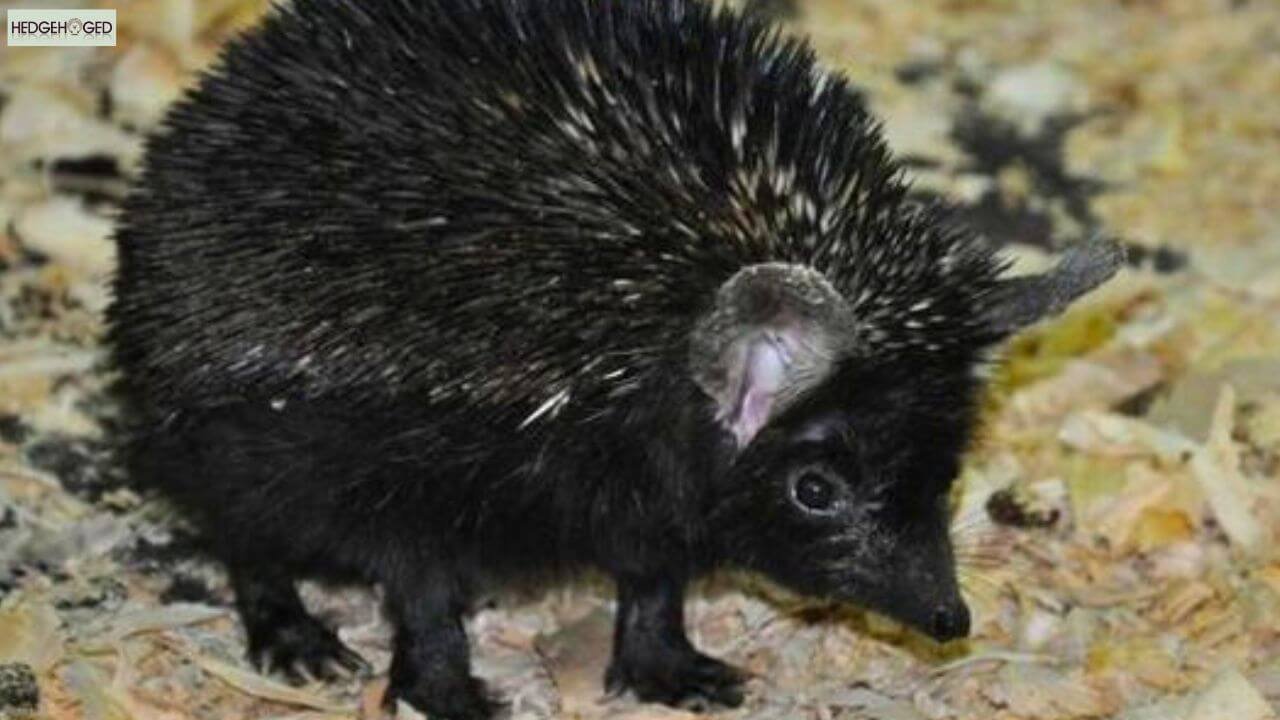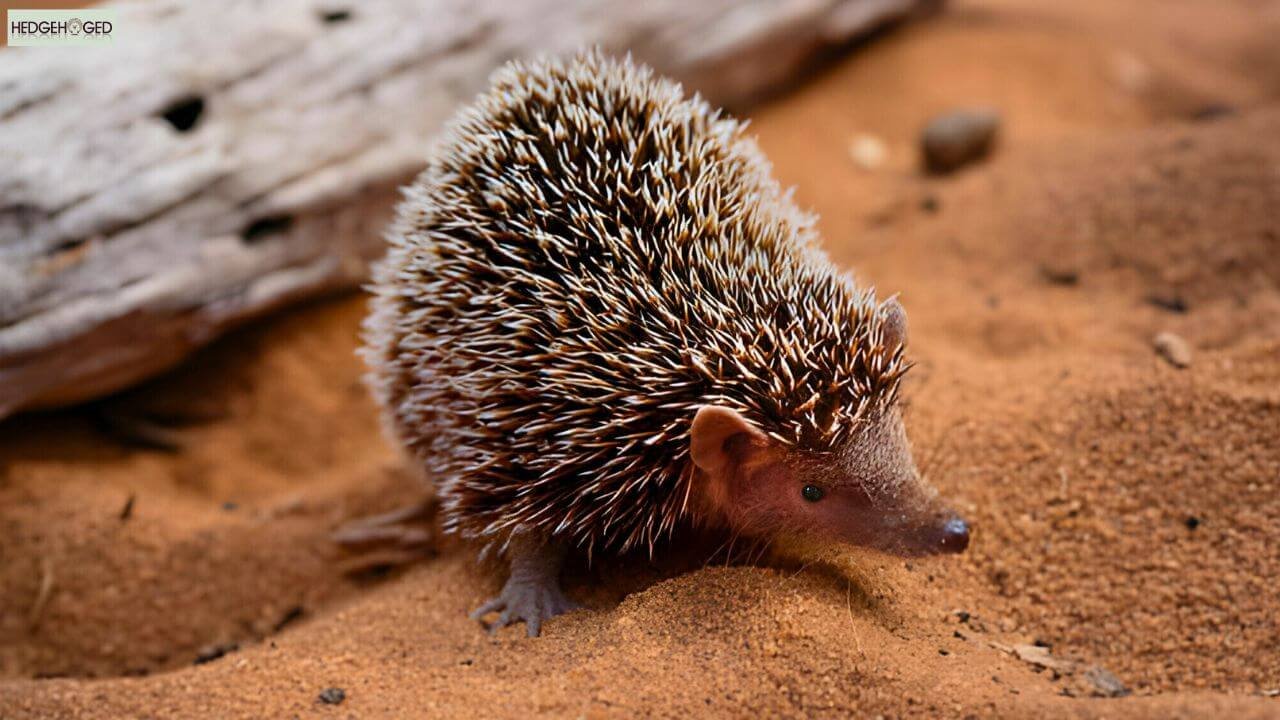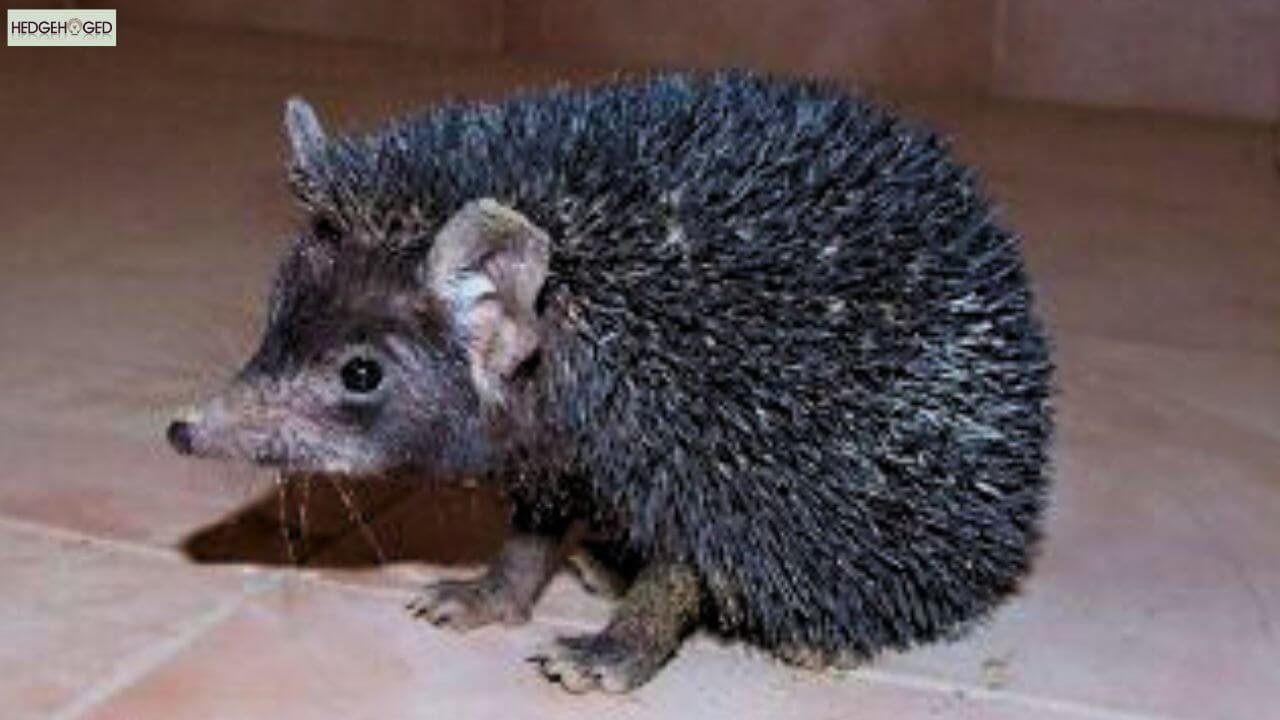Do you have a strong interest in hedgehogs? We at Animal Wised adore this tiny, spiky creature, with its short feet and pointed nose.
They are stunning, self-sufficient animals. Despite their unusual and endearing appearance, we should see them more as toys. Like all other animals in the world, they are animals that need to be taken care of.
We will go over the different types of hedgehogs in this comprehensive guide so you can discover their unique physical characteristics, where to find them, and some interesting trivia.
Discover the different breeds of hedgehogs on this page, covering both domesticated breeds and wild species. You’ll also be astounded by the Erinaceidae family and all that surrounds it.
Types of Hedgehogs (A Complete Guide)
Hedgehogs come in various varieties that can be kept as pets or as wild animals. Mammals are a group of animals that includes hedgehogs. Hedgehog species vary in terms of size, diet, habitat, and behavior. Hedgehogs are little animals with short legs, short spikes on their body, and sharp noses.
Although precise wild hedgehog populations can be difficult to determine, the European hedgehog, commonly referred to as the common hedgehog, is arguably the most prevalent. See our list of the several types of hedgehogs with photographs to learn more about this variety and the others.
How Many Types Of Hedgehogs Are There?
These are quite adorable creatures, and there are a lot of different kinds of hedgehogs—actually, 17 species. These creatures resemble porcupines, but they don’t appear to be the same. We’ll go over a list of 17 distinct kinds of hedgehogs in this article:
Here is a brief overview of 17 distinct kinds of hedgehogs:
1. European Hedgehog
The European hedgehog also referred to as the Common Hedgehog or West European hedgehog, belongs to the genus Erinaceus. They do well in urban settings and are frequently found in gardens throughout Europe. They live in woodlands and grasslands, but they may survive in a variety of environments. The normal length of a European hedgehog is 13 to 15 inches, with brown fur on the cheeks, breast, and stomach. Rare leucistic or blonde hedgehogs—which are not albinos—can occasionally be discovered, particularly in the Channel Islands.
2. A Four Toed Hedgehog or African Pygmy Hedgehog
The Four-Toed hedgehog, which is native to grasslands in Africa, gets its name from the fact that its back foot has four toes. Because of their vast population, the IUCN has categorized them as the least concerned. They do not do well in captivity and love dry areas. Their length ranges from 5 to 12 inches, with females usually being larger.
They have brown or dark grey spines with white tips, and their muzzle is surrounded by brown fur in addition to grey fur. At night, they hunt for a variety of meals, such as bugs, grass, plants, spiders, and snails. Eagle owls, jackals, hyenas, and honey badgers are examples of predators.
3. Somali Hedgehog
The Atelerix genus includes the Somali hedgehog, which is indigenous to Somalia and mostly lives in grasslands and open spaces. Like other hedgehogs, they are nocturnal, solitary animals that forage for food at night.
They resemble the Four-Toed Hedgehog in appearance and have five toes on their back feet. The spines of Somali hedgehogs are covered in dark brown quills, and their undersides are white with brown fur on the back.
4. Southern African Hedgehog
Native to Southern Africa, which includes nations like Angola, Botswana, Namibia, South Africa, and Zimbabwe, the Southern African hedgehog is officially known as Atelerix frontalis. They are nocturnal animals that are active at night searching for food. They favor grasslands and shrubby environments, frequently constructing their homes under leaves or in holes.
The Southern African hedgehog is identified by a noticeable white stripe that runs across its forehead, shoulders, and front legs. Its face, legs, and tail are dark brown or grey, and its underside is colored differently. Their length is about 22 centimeters.
Mollusks, worms, crickets, beetles, grasshoppers, slugs, tiny birds, arthropods, fruits, roots, and leaves are among the items they hunt for during the night. Humans, domestic dogs, and raptors such as eagles are examples of predators.
5. Amur Hedgehog
The scientific name for the Amur hedgehog is indigenous to the Korean Peninsula, China, and certain regions of Russia, particularly the Amur Blast region in Far East Russia and Manchuria in China. They live on the margins of forests and grasslands.
With a height range of 16 to 29 centimeters, the Amur hedgehog is somewhat bigger than the European hedgehog. They are available in two primary color varieties: white and light brown blended with yellow, which gives them a paler look.
Amur hedgehogs are nocturnal omnivores that hunt during the night for food. They consume earthworms, centipedes, snails, mice, and frogs.
Russian and Chinese sources seem to have contradicting information on predators. Some say the Sable feeds on Amur hedgehogs, while others don’t agree.
6. Algerian Hedgehog
Native to North Africa, the Algerian hedgehog (Atelerix algirus) is also referred to as the North African hedgehog and is mostly found in Algeria, Morocco, and Tunisia. Unlike the African Pygmy Hedgehog (Atelerix albiventris), which belongs to a separate species, it is not the same.
Algerian hedgehogs normally measure between 6 and 9 inches in length, which makes them smaller than African Pygmy Hedgehogs. With a covering of spines or quills that they utilize for defense—curling into a ball when threatened—they resemble other kinds of hedgehogs.
These hedgehogs live in a variety of settings, such as grasslands, scrublands, and even cities. Being nocturnal animals, they are mostly active at night, when they search for food by looking for insects, tiny animals, and plant materials.
Algerian hedgehogs are less commonly domesticated than African Pygmy Hedgehogs, however, they have been kept as pets in some areas. They need the same kind of care as other hedgehog species, which includes a safe habitat, enough space for exercise, and a nutritious diet.
7. Southern White-Breasted Hedgehog
Also known as the White-Bellied or White-Chested hedgehog, the Erinaceus concolor, or Southern White-Breasted hedgehog, is a native of South West Asia.
The Southern White-Breasted hedgehog prefers to nest in grass and leaves rather than underground, in contrast to several other species of hedgehogs. Being loners by nature, they build their nests in isolated locations.
The Southern White-Breasted hedgehog resembles the European hedgehog in appearance, with lighter facial hair and a characteristic white mark on its chest, along with brown spikes.
8. Northern White-Breasted Hedgehog
The scientific name for the Northern White-Breasted hedgehog is found in many different parts of the world, including sections of Russia, Siberia, and even the Greek Islands. It is a native of Western countries such as Poland and Austria. Common places to find them include gardens and parks.
The Northern White-Breasted hedgehog can be identified from its European counterpart by its white chest.
Like the European hedgehog, they mostly eat insects and bugs, with the occasional cat or dog food or special hedgehog food set out for them.
9. Long Eared-Hedgehog
Hemiechinus auritus, the Long-Eared hedgehog, is located in Central Asia and some regions of the Middle East. It is a climate-sensitive species.
It can be found in deserts, woodlands, and urban areas, where it burrows under bushes for refuge. Large ears, a smaller stature (about 12 cm), dark spines with lighter tips, and hairy feet are characteristics of this species.
Seventy to seventy-five percent of its diet consists of insects, but it also eats eggs, millipedes, beetles, snails, slugs, and even snakes. Instead of balling up when it feels threatened, it may use its speed to flee or dash in the direction of predators.
The two raptors that pose the greatest threat to long-eared hedgehogs are the Eurasian and Pharaoh eagle owls.
10. Daurian Hedgehog
Native to Northern Mongolia and Russia, the Daurian hedgehog (Mesechinus Daurian) is most prevalent in the Transbaikal region (Dauria). inhabits stony and grassy steppes as a protective habitat.
Compared to other hedgehogs, it is larger (15–20 cm, 600 g), has lighter hair on the face and chest, and darker fur on the abdomen. Its dark brown quills fade near the top. primarily insectivorous; diet consists of eggs, beetles, ants, amphibians, and sometimes mice.
Due to threats from wolves, eagles, foxes, badgers, and ferrets, it is protected in its natural habitats.
11. Gaoligong Forest Hedgehog
The only places in Yunnan province, China, where the Gaoligong Forest Hedgehog (Mesechinus) may be found are the slopes of Mt. Gaoligong, especially in the Gaoligongshan Nature Reserve.
At heights over 2200 meters, it lives in subtropical evergreen woods. Hugh’s and Daurian hedgehogs are similar to this species, but they differ from them in that it has unique colorful patterns on their spine and extra M4 teeth, which are typically only seen in humans and certain ape species. Because it was so recently discovered, not much is known about its prey or food.
12. Hugh’s Hedgehog
The Hugh’s Hedgehog, or Mesechinus Hugh’s, is a species of hedgehog that mostly lives in Central China and Manchuria. It prefers open spaces like grasslands and dry steppes, but it also occasionally hides in forests.
They have smaller stature, brown fur around the face and shoulders, shorter, less pointed noses, and brown quills that lighten toward the tip.
Unlike other hedgehogs, they are nocturnal and are frequently spotted foraging during the day. They mostly eat insects, though they do occasionally eat some grass.
13. Small-Toothed Forest Hedgehog
Within the Mesechinus genus, the Small-Toothed Forest hedgehog is a recently recognized species. It was reclassified as a separate species, increasing the genus’s total to four. It was previously thought to be a subspecies of the Daurian or Hugh’s hedgehogs.
However, because of its recent categorization, not much is known about this species of hedgehog. The Small-Toothed Forest hedgehog most likely lives in comparable regions to that of its close cousins, the Daurian and Hugh’s hedgehogs, which are indigenous to Central China, Manchuria, and portions of Russia.
14. Brandt’s Hedgehog
Native to regions of the Middle East and Central Asia, the Brandt’s Hedgehog (Paraechinus hypomelas) usually lives in deserts, mountains, and some grasslands.
It favors arid environments to live in and, in an emergency, can burrow underground or find cover among rocks. It is about the same size as a European hedgehog, growing to a maximum length of 25 cm.
It has dark brown or black cheeks and quills, and its ears are particularly enormous, like bat ears. Its food is mostly insects, but it also consumes eggs, toads, snakes, and different plants.
The hedgehog’s primary defense mechanism against predators is balling up into a ball and then, in an unusual move, sprinting and springing in their direction to sting them with its spikes. Predators mostly consist of birds of prey.
15. Desert Hedgehog
The Desert Hedgehog (Paraechinus) prefers desert habitats with little vegetation, and it is mostly found in portions of North Africa and certain Middle Eastern countries. Being nocturnal, they seek cover from the sun during the day from rocks and cliffs.
They are among the tiniest hedgehogs, usually growing to a length of 14 to 28 cm. They have dark muzzles with a light band across their faces, and their quills are brown or grey with white tips. Insects, invertebrates, frogs, snakes, and scorpions (without stings) are among their food sources.
With larger spikes and strong hides, they are well-defended despite their small size. A variety of birds of prey, including eagles and owls, are the main predators.
16. Bare-Bellied Hedgehog
The Madras hedgehog, or Bare-Bellied Hedgehog (Paraechinus), is indigenous to southeast India, mostly to states like Kerala. It can be found in rocky and jungle settings, and it prefers dry conditions. It is unusual and was once believed to be extinct.
Its typical length, including the head and body, is between 14 and 25 cm, and its tail is between 1 and 3 cm long. Because of its rarity, nothing is known about its look and behavior.
17. Indian Hedgehog
Native to India and certain parts of Pakistan, the Indian Hedgehog (Paraechinus micropus) is predominantly found in sandy desert regions however it can adapt to different habitats. Its dark brown fur, lighter spots, short tail and head, long nose, and huge ears give it a raccoon-like look.
The face resembles a raccoon since it is dark with a white top and may have spots or patches. It doesn’t hibernate like many hedgehogs do, but when food is scarce, it can slow down its metabolism. Various insects, toads, frogs, bird eggs, snakes, and scorpions are among its food sources. Foxes, Indian grey mongooses, and rock-horned owls are examples of predators.
FAQs
Can hedgehogs make good pets?
Yes, some species of hedgehogs, like the African pygmy hedgehog, can make great pets. They are small, low-maintenance, and can be quite friendly with proper care and handling. However, it’s essential to check local regulations and ensure you’re prepared for their care needs before getting one as a pet.
How many types of hedgehogs are there?
There are 17 known species of hedgehogs, each with its unique characteristics and habitats. From the common European hedgehog to the elusive Indian hedgehog, these species vary in size, appearance, and behavior.
Where do hedgehogs live?
Hedgehogs can be found in various habitats worldwide, including grasslands, woodlands, deserts, and urban areas. They are adaptable creatures that thrive in diverse environments.
What do hedgehogs eat?
Hedgehogs are omnivores, meaning they eat both plant and animal matter. Their diet typically includes insects, worms, fruits, and occasionally small vertebrates like frogs or mice. Pet hedgehogs may also eat specially formulated hedgehog food.
Are hedgehogs endangered?
While some species of hedgehogs are threatened by habitat loss and other human activities, others are considered least concern. Conservation efforts are important to protect these unique creatures and their habitats.
Conclusion
That’s it for now. An all-inclusive list of different types of hedgehogs that may be found all over the world, as I found seventeen different kinds. Certain species—like the African pygmy hedgehog—are domesticated, but others are still wild and are in danger from predators and habitat degradation. It’s critical to recognize each species’ needs and to respect them in their environments. For these rare and cherished animals to survive, conservation efforts are essential.


















